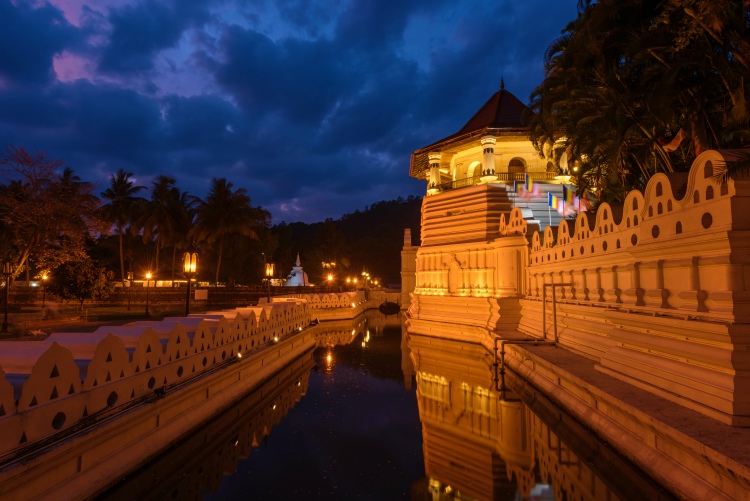
Nestling midst low hills and looped by Sri Lanka’s largest river, the Mahaweli, Kandy is still the home of the Arts and Crafts, Music, Dance and Song which flourished during the reign of the kings. The last Kingdom, visiting the temple of the sacred tooth relic; the most important place of worship for Buddhists world-over at which place you’ll get to participate in a colorful ceremony to the tune of the Eastern tom toms. It will be full of culture and timeless ritual.
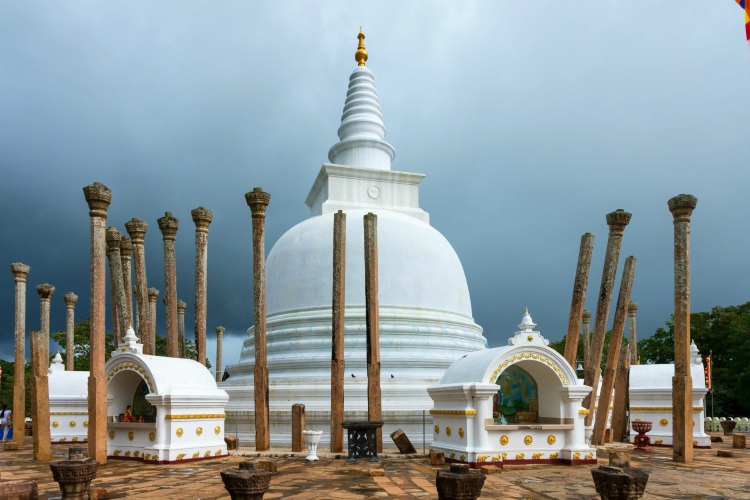
The Sacred City of Anuradhapura Anuradhapura and the city of Polonnaruwa are the vitally important “must visit” twin tourist attractions of Sri Lanka’s Cultural Triangle. Anuradhapura, the greatest monastic city of the ancient world that date from the middle of the 5th century B.C. remained the proud seat of kingdom of Sri Lanka until the 11th century A.D. Today Anuradhapura, a UNESCO World Heritage Site, is replete with renovated monuments, restored edifices, preserved ruins and historical sites where the archeological excavations are still being continued.
Polonnaruwa was the medieval capital of Sri Lanka from the 11th Century AD. In its time, a 6 km (3 ½ mile) rampart protected the city. Even during the Anuradhapura era, this was an important city because it strategically commanded all the crossings over the Mahaveli River and acted as a buffer against the invading armies.
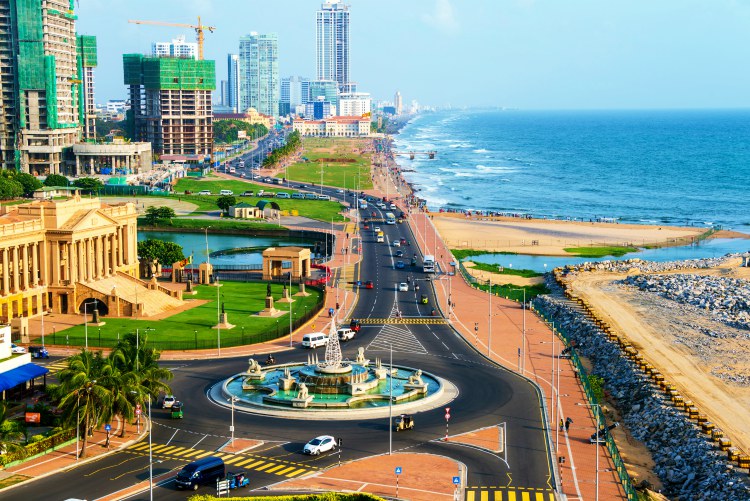
Colombo, the business hub of Sri Lanka, is a constant bustle of activity, offering you a myriad of experiences. Moreover, shopping in Colombo, is an essential part of one’s travel itinerary. When shopping in Colombo, your choices are anything but limited. The city adds spice to your shopping experience with modern shopping malls, boutiques and the insanely popular street markets. A shopper’s haven, Colombo offers everything from designer-wear to electronic items.
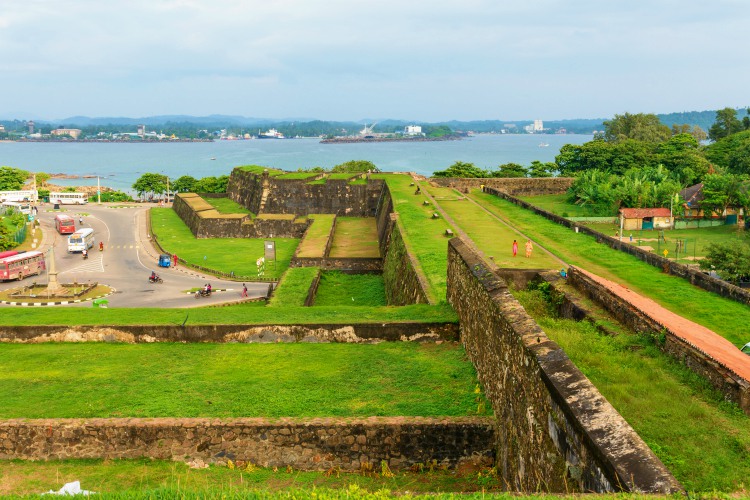
At Galle you’ll find the 17th century Dutch Fort that is now declared as a World Heritage Site. In a vast isthmus protected by a massive rock wall built around it, you would come across grand churches, great Dutch buildings, ancient garrisons and cannon positions, maze of court yards, paved assembling positions all well connected by cobblestone streets and then a lovely maritime museum, everything restored to its former glory after the devastating Tsunami in 2004. Actually most of it was generously funded by the Dutch Government. The British built a classic light house in 1848 and you could saunter from the light house to the entrance of the Fort along a paved path virtually on the towering Fort-wall enjoying the view of the rocky sea beach and its aquamarine waters on one side and the great Fort on the other.
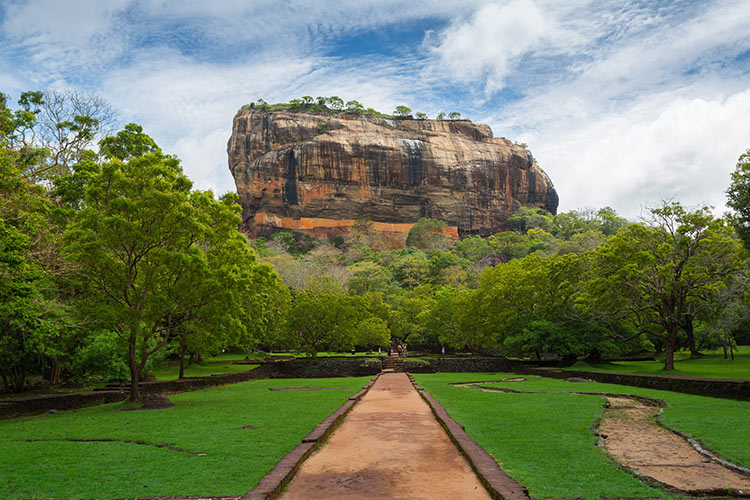
Ancient glory dazzles at Sigiriya with a stunning 5th Century rock fortress Citadel built by a fugitive king in the sky acclaimed as the 8th Wonder of the World. It’s yet another world heritage site. Different theories of its creation are published by eminent archaeologists. Some say that once a Kingdom of a King was later used by monks as a monastery complex.
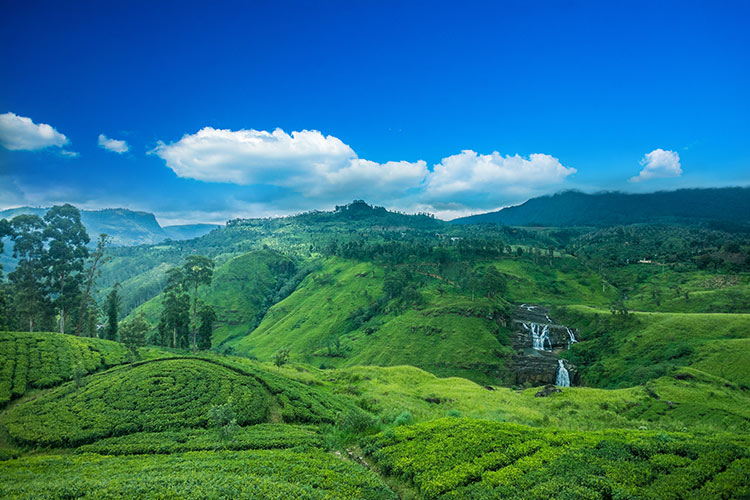
Situated at around 2000m above sea level and surrounded by verdant tea plantations. NuwaraEliya is the main hill resort of Sri Lanka and the heart of the tea industry. This city with an elevation of 6200 meters is the highest in Sri Lanka. Once a pleasure retreats of the European planters the town is still very much an English town with many English style bungalows and buildings.

The most fascinating beach of all beaches runs along almost the entire length of the East coast of the Island. It is now opened to the visiting tourists to explore in an absolute untouched state after three war ravaged decades. The noticeable remoteness attached to the tranquil wilderness of the arid coastline is home for herds of wild elephant and friendly peacock families where at the crack of the dawn on the Eastern skies, the breadth-taking beauty of Mother Nature steals everything else. It’s sure to leave a visitor spellbound by its awe-inspiring wonder itself. A sea-bound visitor not only could surf to one’s heart’s content at Arugam Bay; one of the ten best surfing seas in the world but enjoy miles of shallow seas at Passikudah Bay to wade at will.
Capital of the province Trincomalee, built around one of the finest natural harbors in the world features a long stretch of white sandy beach ideal for safe sea-bathing during the season. It is actually the widest beach in Sri Lanka and the seas around the uninhabited pigeon Island in Nilaveli are known for highly productive scuba diving. In addition to being a popular tourist colony, it offers a great sea-side character with scores of fishing and naval activities taking place in the vicinity. Here, remains of a classic 17th century Dutch Fort found on a hillock, strategically built overlooking the harbor, brings to light the European influence on the historical city that had seen great sea battles fought for prestige. The typical location highlights the challengers those may have vexed upon the colonial imperialists who fanatically longed for a possible footholdon the all-important harbor for their maritime supremacy. The town has some great infra-structure for tourists and more are being added at this moment in form of six star investments.
One shouldn’t miss a visit to the famous quadrangle temple of Thiriyaya; the very first quadrangle to be built in Sri Lanka found in elephant infested jungles overlooking the sea, just North of Trinco. Another interesting feature is the ancient Koneshwaran Hindu temple built on a rock found overlooking the vista of the great harbor.
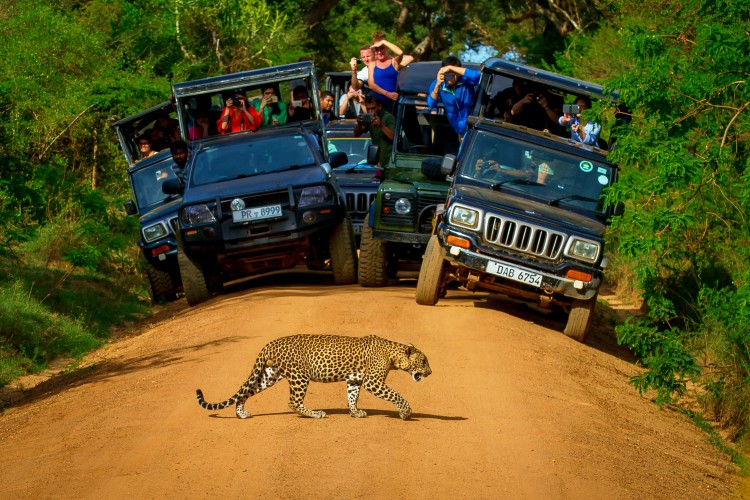
Yala National Park is the most visited and second largest national park in Sri Lanka. Actually it consists of five blocks, two of which are now open to the public; and also adjoining parks. The blocks have individual names also, like Ruhuna National Park for the (best known) block 1 and Kumana National Park or ‘Yala East’ for the adjoining area. It is situated in the southeast region of the country, and lies in Southern Province and Uva Province. The park covers 979 square kilometres (378 sq miles) and is located about 300 kilometres (190 miles) from Colombo. Yala was designated as a wildlife sanctuary in 1900, and, along with Wilpattu it was one of the first two national parks in Sri Lanka, having been designated in 1938. The park is best known for its variety of wild animals. It is important for the conservation of Sri Lankan Elephants and aquatic birds.
There are six national parks and three wildlife sanctuaries in the vicinity of Yala. The park is situated in the dry semi-arid climatic region and rain is received mainly during the northeast monsoon. Yala hosts a variety of ecosystems ranging from moist monsoon forests to freshwater and marine wetlands. It is one of the 70 Important Bird Areas (IBAs) in Sri Lanka. Yala harbours 215 bird species including six endemic species of Sri Lanka. The number of mammals that has been recorded from the park is 44, and it has one of the highest leopard densities in the world.
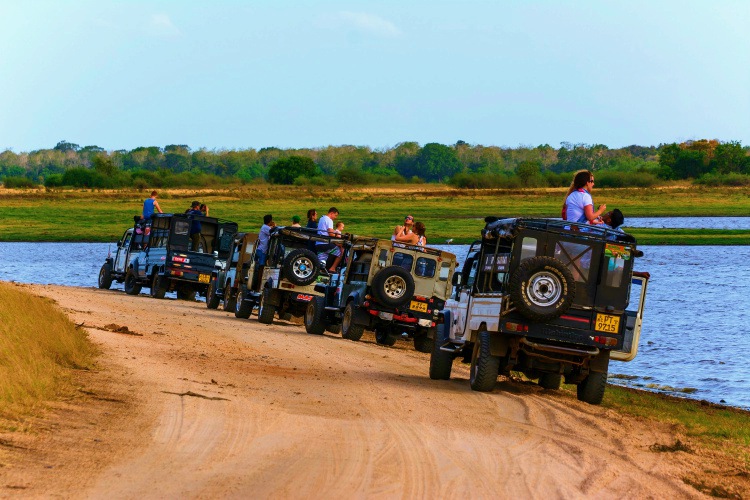
Minneriya National Park which is a hot spot for safari lovers because of the abandons of Elephants. Furthermore it is situated near Habarana which have some high class hotels for tourists and some famous world heritage sites like Anuradhapura, Polonnaruwa and Sigiriya which are relatively close to Minneriya.
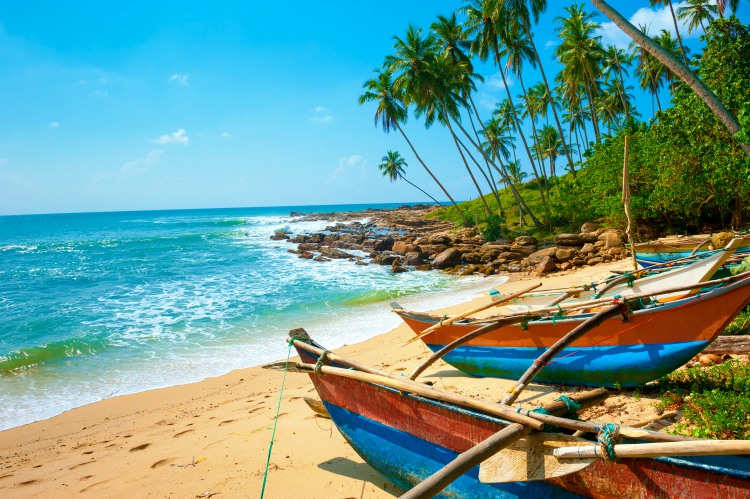
Arugam Bay is a bay situated on the Indian Ocean in the dry zone of Sri Lanka’s southeast coast. The bay is located 320 km due east of Colombo. “Ullai” as Arugam Bay is locally known is a popular surfing and tourist destination.